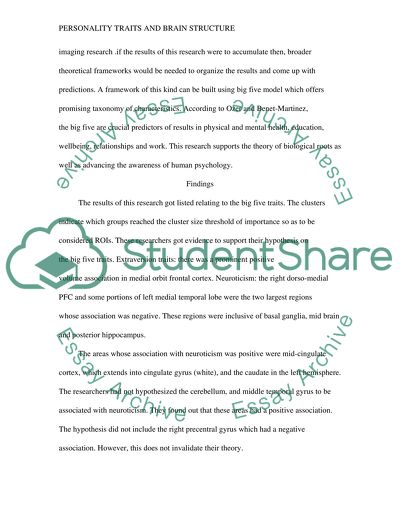Cite this document
(“Personality Traits Association with Brain Structure Article”, n.d.)
Retrieved from https://studentshare.org/psychology/1448705-based-on-an-article
Retrieved from https://studentshare.org/psychology/1448705-based-on-an-article
(Personality Traits Association With Brain Structure Article)
https://studentshare.org/psychology/1448705-based-on-an-article.
https://studentshare.org/psychology/1448705-based-on-an-article.
“Personality Traits Association With Brain Structure Article”, n.d. https://studentshare.org/psychology/1448705-based-on-an-article.


